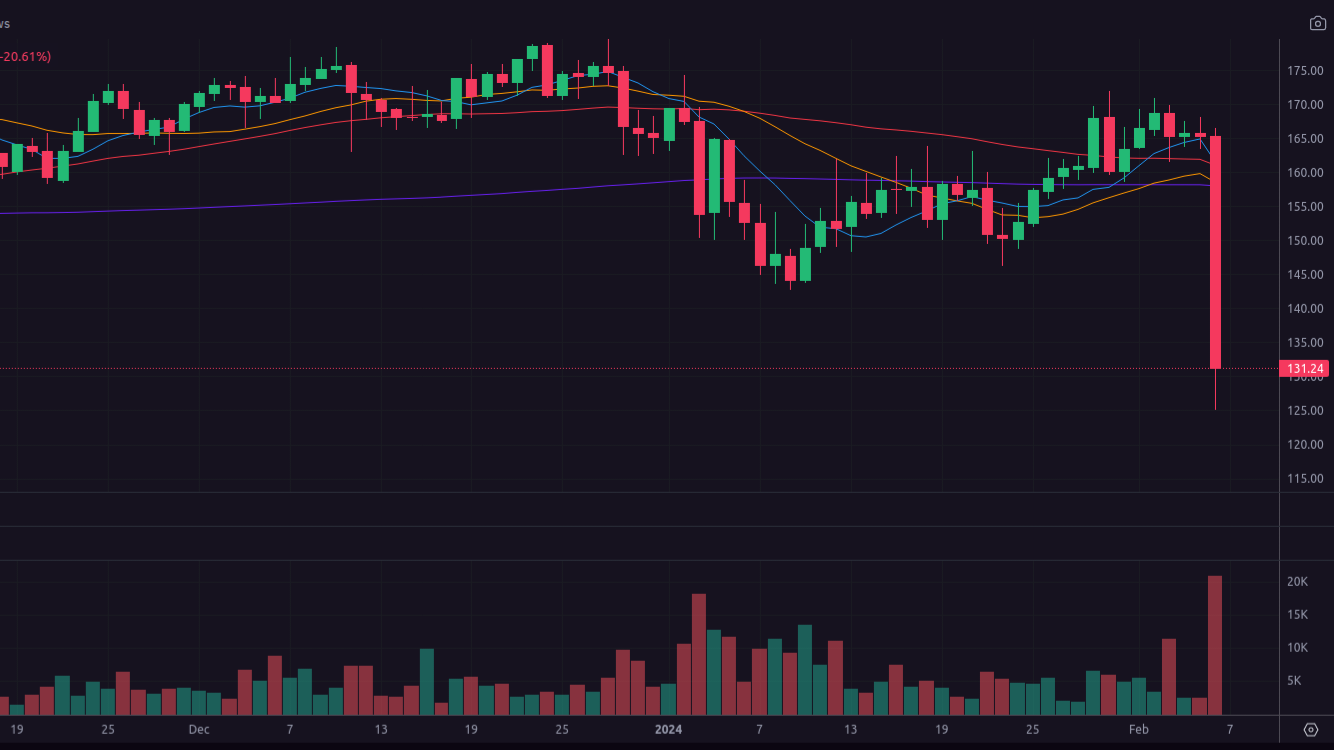In a significant development for the world of cryptocurrencies, Binance recently announced its decision to delist Monero (XMR) along with three other digital assets – Aragon (ANT), Multichain (MULTI), and Via (VAI) – effective from February 20, 2024. This announcement led to an immediate drop in Monero’s price, which fell by approximately 17%, reaching five-month lows. But what prompted this decision by Binance, one of the largest and most influential players in the crypto space? Let us explore the reasons behind this move and analyze its implications for both Binance and Monero.
Firstly, let’s understand why Monero has been under scrutiny lately. As a privacy coin, Monero incorporates specific features designed to enhance anonymity and minimize traceability, making it difficult to discern the sender, receiver, and transactional details. While these attributes cater to individuals who value confidentiality in their financial transactions, they also raise concerns among regulators and law enforcement agencies worldwide due to the perceived increased risk of illicit activities.
This heightened regulatory focus is primarily responsible for Binance’s decision to delist Monero. According to the official statement released by Binance, the delisting results from a regular evaluation process considering various factors, including project progress, level of engagement, and commitment towards achieving compliant standards within the evolving regulatory landscape. Moreover, regulatory bodies across multiple jurisdictions continue to exert increasing pressure on cryptocurrency platforms to ensure stricter controls and monitoring mechanisms, especially when dealing with privacy coins. By removing Monero from its offerings, Binance aims to maintain its reputation as a reputable and reliable player in the highly regulated financial services sector while addressing mounting regulatory concerns.
Furthermore, Binance isn’t alone in taking such action. Other prominent exchanges, including OKX, previously decided to delist several privacy-oriented coins, including Monero, ZCash, and Dash, owing to non-compliance with stringent listing requirements. This trend indicates a broader shift in the industry, where regulatory compliance and user feedback drive critical decisions related to asset listings and availability.
While Monero’s removal from Binance may initially seem detrimental, it could potentially serve as a catalyst for further improvements in the project’s overall ecosystem. With enhanced attention on regulatory compliance, Monero can take proactive steps to address concerns surrounding its use in illegal activities and strive towards becoming a more mainstream and widely accepted form of digital currency. Additionally, decentralized finance (DeFi) solutions built around Monero could emerge as viable alternatives for users seeking continued access to this popular privacy coin.
Conclusion: Weighing the Implications of Binance’s Monero Delisting
While Binance’s decision to delist Monero indeed represents a setback for the privacy coin, it raises questions concerning the future trajectory of the exchange itself. Critics argue that Binance’s newfound emphasis on regulatory compliance signals a decline in its autonomy, suggesting that the exchange has become increasingly subservient to U.S. authorities. As a consequence, Binance may lose its edge as a bastion for innovative projects and free trade, ultimately eroding trust among its vast user base.
With the delisting of Monero, investors must consider whether this presents an opportunity to accumulate more XMR at lower prices or if it’s time to divest and look elsewhere. On one hand, the reduction in available trading venues could lead to decreased liquidity and higher volatility in Monero’s markets, creating favorable entry points for patient buyers. However, given the ongoing regulatory crackdown targeting privacy coins, potential risks associated with holding XMR should not be overlooked.
Ultimately, each investor must weigh the pros and cons based on their individual appetite for risk and investment horizon. For those willing to endure possible short-term pain in pursuit of long-term gains, buying the dip in Monero could prove advantageous. Nevertheless, prudence dictates conducting thorough research before committing funds to any investment, particularly during periods of uncertainty and transition.
Disclaimer: This analysis is intended for informational purposes only and does not constitute professional financial advice. Investors should conduct independent research and consult with a qualified financial advisor prior to making any investment decisions.


